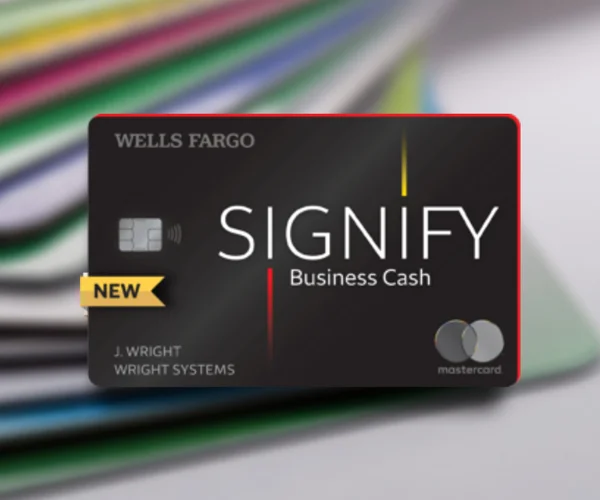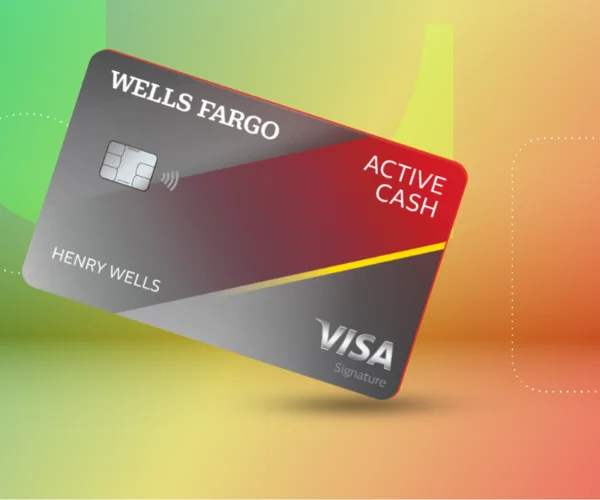Understanding Wells Fargo Business Credit Card Options
When it comes to selecting the right business credit card for your company, Wells Fargo offers a variety of options designed to cater to different business needs. Whether you're looking for robust rewards or straightforward cash back, understanding the distinctions between each card can help you make an informed decision.
Overview of Wells Fargo's Business Credit Card Portfolio
Wells Fargo's business credit card lineup includes three main products:
- Wells Fargo Business Platinum Credit Card
- Wells Fargo Business Secured Credit Card
- Wells Fargo Business Elite Signature Card
Each card offers unique benefits tailored to different business sizes and financial goals.

Key Features that Distinguish Each Card Type
Wells Fargo Business Platinum Credit Card
The Business Platinum Card is ideal for small to medium-sized businesses. It offers:
- A generous introductory APR on purchases
- No annual fee
- Rewards options, including either cash back or points that can be redeemed for various perks
Wells Fargo Business Secured Credit Card
Designed for businesses looking to build or repair their credit, this card features:
- A refundable security deposit to establish your credit line
- The ability to earn rewards, similar to the Platinum Card
- Customizable spending limits for employee cards
Wells Fargo Business Elite Signature Card
The Elite Signature Card is tailored for larger businesses with higher spending needs. Key benefits include:
- Various premium perks like higher spending limits
- A more extensive rewards program
- Complimentary employee cards with custom spending limits
Comparison of Annual Fees and Basic Rewards Structures
- Business Platinum Credit Card: No annual fee. Offers 1.5% cash back on every purchase or 1 point per dollar spent with a 1,000-point bonus each billing cycle when you spend $1,000 or more.
- Business Secured Credit Card: $25 annual fee per card. Offers the same rewards structure as the Platinum Card, making it a solid option for credit-building businesses that still want to earn rewards.
- Business Elite Signature Card: $125 annual fee, which can be waived if your company spends $10,000 annually. It offers a tiered rewards system, providing more points per dollar spent as your business meets higher spending thresholds.
Taking into account these features and fees, it's clear that Wells Fargo has tailored its business credit cards to meet the diverse needs of various business sizes and spending habits. This consideration will be essential as you assess your company's specific credit card needs and how they align with the benefits offered by each card.
End of Chapter.
Assessing Your Business Credit Card Needs
Evaluating Your Company's Monthly Spending Patterns and Categories
Understanding your company's spending habits is crucial when selecting a business credit card. Take a close look at your monthly expenses, including office supplies, travel, and utilities. Identify the categories where your business spends the most. This will help you focus on credit cards with rewards structures that align with your spending patterns.
For example, if your business frequently incurs travel expenses, opting for a card with travel rewards or perks could be beneficial. Conversely, if your primary expenses are office supplies or marketing, a cash back card on these categories may be the better option.
Considering Your Business Size and Growth Stage
Your business size and its growth stage play significant roles in choosing the right credit card. Smaller businesses may favor cards with no annual fees and simple rewards programs, while larger companies with significant expenses might prefer cards offering substantial rewards and higher credit limits.
Additionally, consider the future growth of your business. A card with scalable benefits ensures that as your business grows, the card remains useful and advantageous. This forward-thinking approach keeps the credit card relevant for the long term.
Application Requirements and Process
Credit Score and Business Documentation Requirements
When applying for a Wells Fargo business credit card, understanding the key requirements can significantly enhance your approval prospects. Your credit score plays a pivotal role. While Wells Fargo does not publicly disclose the exact score required for its business credit cards, a good credit score (generally 670 or higher) is typically needed for the best offers.
Business documentation is equally important. You will need:
- Federal tax ID (Employer Identification Number)
- Business legal name and type
- Annual revenue
- Years in operation
- Personal information of business owners (Social Security numbers, addresses, etc.)
Steps to Apply for a Wells Fargo Business Credit Card
Applying for a Wells Fargo business credit card involves several steps:
- Select the Card: Review the different Wells Fargo business credit cards and select the one that aligns with your business needs.
- Gather Documentation: Assemble all required documentation, including your EIN, business details, and personal information.
- Complete the Application: Fill out the application online or at a Wells Fargo branch. You will need to provide detailed financial and personal information.
- Submit Your Application: After thoroughly reviewing your information, submit your application. Depending on the card, you may receive a decision instantly or within a few business days.
- Await Approval: If approved, your new credit card will arrive by mail. Ensure you carefully read the welcome materials.
Tips for Improving Approval Chances
To enhance your chances of getting approved:
- Maintain a Strong Credit Score: Regularly monitor and improve your personal credit score.
- Organize Your Business Finances: Ensure your business financials are up-to-date and accurate. This includes maintaining a clear and positive cash flow record.
- Clear Existing Debts: Reduce your current debt liabilities to improve your financial standing and lower your debt-to-income ratio.
- Build a Relationship with Wells Fargo: If possible, establish a business account with Wells Fargo to demonstrate your business reliability and existing relationship with the bank.
Next, let's explore strategies for maximizing your card benefits to ensure you get the most out of your Wells Fargo business credit card.

Maximizing Your Card Benefits
Strategies for Earning Maximum Rewards
To make the most out of your Wells Fargo business credit card, it’s essential to tailor your spending behavior to match the card’s reward structure. For instance, if you hold a card that offers higher rewards for office supplies and utility payments, ensure that you charge these specific expenditures to your card.
Additionally, take advantage of sign-up bonuses typically offered by Wells Fargo. These bonuses usually require you to spend a certain amount within the first few months. By planning major business purchases around the introductory period, you can unlock substantial rewards quickly.
Leveraging Card Features for Business Expense Management
Wells Fargo business credit cards come with robust tools for managing expenses, which can streamline your accounting processes. Utilize the expense tracking features to categorize your spending for easy end-of-year reporting. Many cards also offer detailed transaction reports, which can simplify budgeting and financial planning.
Cardholders should also leverage automatic billing and payments to avoid late fees and maintain a positive credit rating, which is essential for business growth and additional credit facilities.
Integrating with Wells Fargo Business Banking Services
A significant advantage of holding a Wells Fargo business credit card is the seamless integration with other Wells Fargo business banking services. Link your credit card with your Wells Fargo business checking account to enable real-time funds transfers and access exclusive banking benefits. This integration can offer a unified view of your finances, making it easier to manage cash flow and reconcile accounts.
By understanding and utilizing these features, you can optimize your business credit card benefits, ensuring they align seamlessly with your overall business strategy.
Making Your Final Decision
Checklist for Comparing Card Options
When evaluating Wells Fargo's business credit cards, ensure you have a clear comparison framework. Here are a few key points to consider:
- Annual Fees: Check the annual fees for each card. If your business is small or just starting out, a card with no annual fee, like the Wells Fargo Business Platinum Card, might be ideal.
- Reward Structures: Compare the rewards setup. Decide if cash back or points better serve your business needs.
- Interest Rates: Review the Regular APR and introductory APR offers. These can greatly affect your finances in the initial months.
- Bonus Offers: Look for sign-up bonuses. These can provide significant early value.
- Additional Fees: Pay attention to foreign transaction fees, balance transfer fees, and late payment fees. Make sure they align with your business operations.
Long-term Value Considerations
Choosing the right card means planning for the future. Consider the following long-term aspects:
- Scalability of Benefits: As your business grows, will the card's benefits continue to be valuable? For instance, a card that offers customizable employee cards can be beneficial as you add new staff.
- Loyalty and Rewards: Look at how rewards accumulate and redeem. A card that offers flexible options will be more useful in the long run.
- Integration with Business Banking: Integration with Wells Fargo's business banking can streamline financial management, making your accounting and fund transfers more efficient.
Common Pitfalls to Avoid
When selecting a business credit card, steer clear of these common pitfalls:
- Overvaluing Initial Bonuses: Don't choose a card solely based on a hefty sign-up bonus. Ensure its everyday benefits also meet your needs.
- Ignoring APR After Introductory Period: Many cards offer low or 0% APR initially but high rates afterward. Make sure the long-term APR is sustainable.
- Neglecting Fees: Small fees can add up, impacting your bottom line. Carefully review all potential charges to avoid surprises later.
While it's tempting to get carried away by flashy offers, maintaining focus on long-term value ensures you pick the best card for sustained business success.